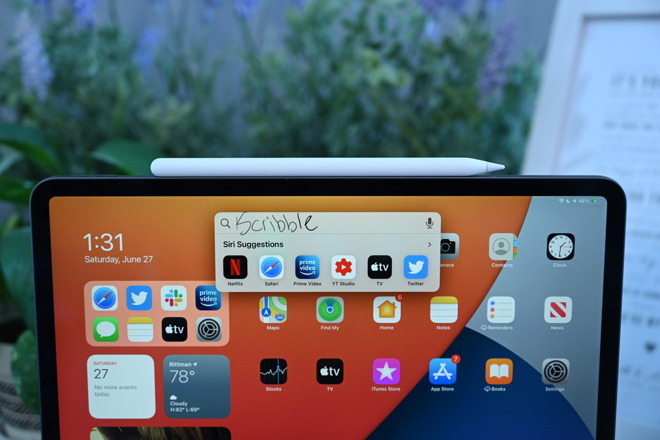Apple engineer, product manager discuss Scribble on iPadOS 14
Apple software engineer Jenny Chen and product manager Stephen Tonna in an interview this week detailed new iPadOS 14 features including Scribble, an updated user interface and the seamless nature of switching between iPad's multiple input methods.

Speaking with Myke Hurley, Stephen Hackett and Federico Viticci on this week's episode of the Connected podcast, Chen detailed how far Apple Pencil has come as an input device. In a short span, the stylus has gone from a note taking and drawing tool to what is for some a necessary part of iPad's workflow.
"But now we're so much smarter with what you can do with it," Chen said. "Like, you know, we can recognize your handwriting, it's so much easier to select without having to enter any modal type things. And then along with Scribble, it's like I can go from one to the other and never have to put it down."
Tonna elaborated on the addition of Scribble, which in iPadOS 14 allows users to write in any text field. Using handwriting recognition technology, iPadOS converts scribbles into typed text, enabling fast input without transitioning to a software or hardware keyboard.
Scribble was built for Apple Pencil power users, Tonna says.
"One of the things we've heard for many years from our very passionate Apple Pencil users is -- and I think this is something you can only appreciate if you really are a passionate Apple Pencil user -- is when you're using it, when you're in that flow of drawing or illustration or note taking, putting it down can have that effect of breaking that flow," Tonna said. "You don't want to have to put it down to respond to an iMessage or do a quick search in Maps for a dinner location or something like that."
He adds that Scribble keeps users in a "Pencil state of mind."
That said, Tonna underscored that iPad's ability to support touch, type and stylus input -- and iPadOS' ability to seamlessly adapt to each -- is at the core of Apple's system. This versatility is why iPad enjoys a healthy following, he said.
Chen and Tonna also discussed machine learning integration, which powers real-time handwriting recognition, user interface considerations for writing with Pencil, smart Pencil features like search and block text editing, and iPadOS 14 design.

Speaking with Myke Hurley, Stephen Hackett and Federico Viticci on this week's episode of the Connected podcast, Chen detailed how far Apple Pencil has come as an input device. In a short span, the stylus has gone from a note taking and drawing tool to what is for some a necessary part of iPad's workflow.
"But now we're so much smarter with what you can do with it," Chen said. "Like, you know, we can recognize your handwriting, it's so much easier to select without having to enter any modal type things. And then along with Scribble, it's like I can go from one to the other and never have to put it down."
Tonna elaborated on the addition of Scribble, which in iPadOS 14 allows users to write in any text field. Using handwriting recognition technology, iPadOS converts scribbles into typed text, enabling fast input without transitioning to a software or hardware keyboard.
Scribble was built for Apple Pencil power users, Tonna says.
"One of the things we've heard for many years from our very passionate Apple Pencil users is -- and I think this is something you can only appreciate if you really are a passionate Apple Pencil user -- is when you're using it, when you're in that flow of drawing or illustration or note taking, putting it down can have that effect of breaking that flow," Tonna said. "You don't want to have to put it down to respond to an iMessage or do a quick search in Maps for a dinner location or something like that."
He adds that Scribble keeps users in a "Pencil state of mind."
That said, Tonna underscored that iPad's ability to support touch, type and stylus input -- and iPadOS' ability to seamlessly adapt to each -- is at the core of Apple's system. This versatility is why iPad enjoys a healthy following, he said.
Chen and Tonna also discussed machine learning integration, which powers real-time handwriting recognition, user interface considerations for writing with Pencil, smart Pencil features like search and block text editing, and iPadOS 14 design.


Comments
I have never seen Mail "pop to the foreground" or lost any mail. They do resolve bugs. No idea what you're talking about with left/right ports of MacBook Pro but that doesn't sound like it's related to Mail, does it?
Do you not see the logical fallacies with any of this?